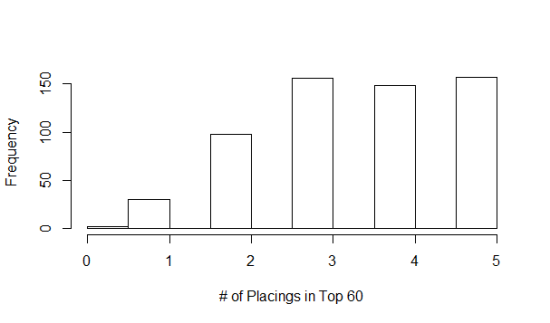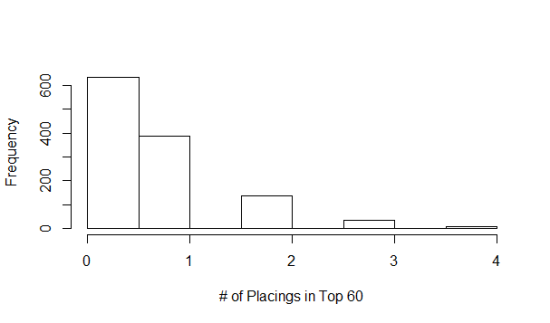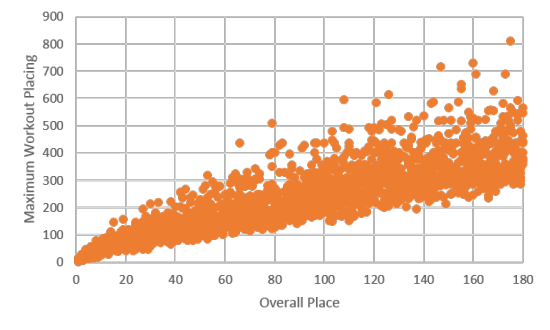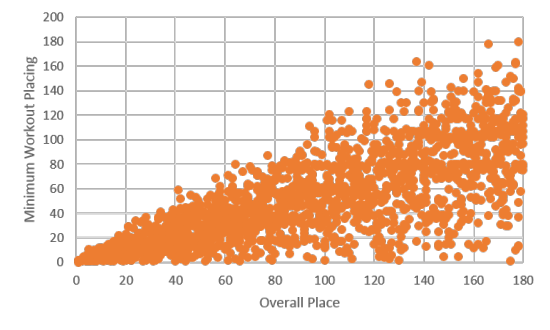UPDATE – 5 March 2014 – Continued from previous post.
Here are a couple of historgrams illustrating the frequency of top 60 placings for competitors in a given year and region. So, an athelete, say, Emily Bridgers, completes 5 workouts during an Open. How often does she place in the top 60 during that Open event? 5 of 5 times. I wanted to consider this for 1800 athletes, 600 of which finished in the top 60 over two years and five regions.
So, how many athletes did the same as Emily, finishing 5 of 5 workouts in the top 60? 150 (Fig. 3). Yes, there are duplicates – Emily did this (5 for 5) both years, and it’s counted as two ‘separate’ athletes in the estimate. There are other criticisms one can provide, and maybe I’ll consider them… but here’s a summary of the data I’m talking about:


I split the rankings into two groups: the Top 60 finishers (Fig. 3) and athletes that finished between 61st and 180th (Fig. 4). Within the top 60, the majority of athletes placed within the top 60 during five open workouts at least 3 times – about 450 of 600 did this. About 100 athletes finishing in the top 60 placed within the top 60 twice during a given Open, and a handful (~45) even did this once. In fact, there were two athletes that never finished within the top 60, and finished with an overall placing of 56th and 58th… Why? Because their placings were consistently between 62 and 140. They never had a bad workout.
That said, look at Fig. 4. There were nearly 400 athletes that placed in the top 60 during an Open, but placed overall between 61st and 180th. 400 of 1200 athletes. So the Open works both ways, and this is supported by Fig. 2 (look at the right side of the graph… see how many points there are really close to the x-axis) and Fig 4., one good work out will not guarantee you a spot at Regionals, and one bad one won’t guarantee you’re knocked out of the running.
These results suggest that Regional qualification is weighted heavily in performance consistency during an Open. I would like to point out the sliver on Fig. 4, representing the number of athletes (six of them) finishing FOUR of five workouts within the top 60… and still being booted from the top 60 overall. This says, don’t screw up too badly on a single work out. And by too badly, the highest place for these six athletes: 304, 279, 395, 394, 511, and 449.
Maybe more to come… I started an R script…


